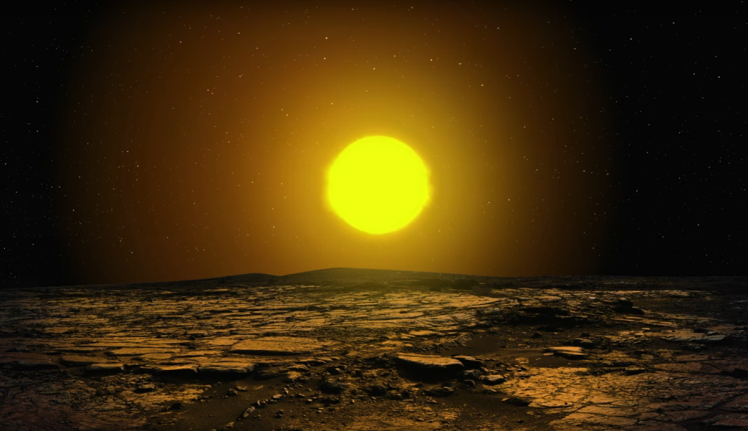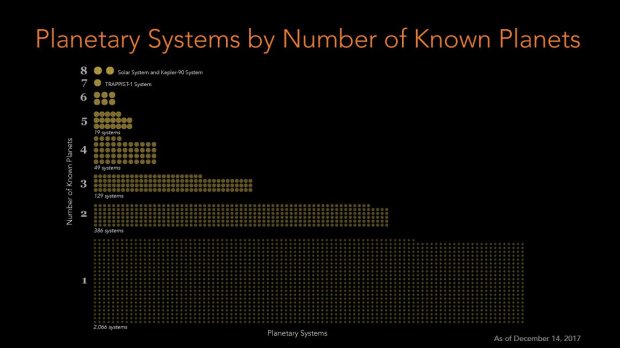This is incredible, an eight planet solar system announced yesterday is the most planets in a solar system discovered outside our own solar system so far. The known planets in that system extends out to the habitable zone where Earth does in our own solar system but instead there is two gas giants in that region. I would speculate this system might have habitable exo-moons orbiting those gas giants, maybe even possibly for life as we know it. If there is intelligence somewhere in that system with astronomical capabilities of their own powerful enough to image planets around other stars they would be able to observe Earth around 300BC through their own telescopes as they are 2300 light years a way.
The space agency teamed up with the tech firm to scan the universe for ‘exoplanets’ – the name for planets orbiting other stars. Google used artificial intelligence to sift through old data to find an eighth planet in a distant system called Kepler 90, which has been named Kepler-90i. This is the first time a star system with as many planets as our our own solar system has been discovered way out in deep space. Kepler-90 is a ‘sun-like star’ which is 2,545 light-years away from Earth in the constellation Draco.
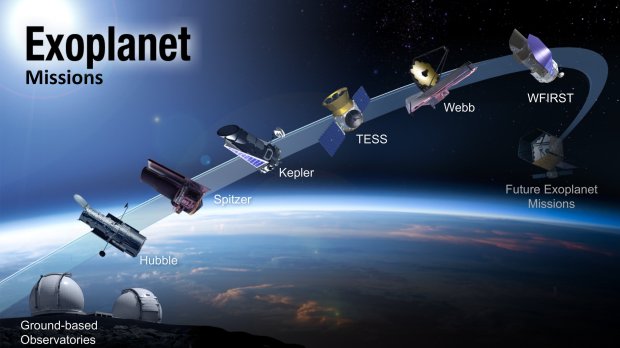
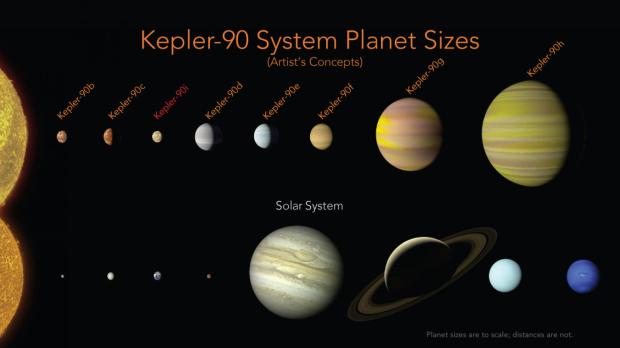
What is Kepler-90i like? The planet is ‘sizzling hot’ and orbits its home star once every 14 days. It’s about 30 percent larger than Earth and is so close to its own sun that temperatures soar to 426 degrees celsius – hot enough to burn humans alive almost instantaneously. ‘For the first time since our solar system’s planets were discovered thousands of years ago, we know for sure that our solar system is not the sole record holder for the most planets,’ said astronomer Andrew Vanderburg.
Kepler-90 may have as many planets as our own solar system, but it is very different. All eight planets orbit closer to their host star than Earth is to the sun. ‘The Kepler-90 star system is like a mini version of our solar system. You have small planets inside and big planets outside, but everything is scrunched in much closer,’ Vanderburg added. What is the Kepler telescope and how did Nasa and Google work together?
Kepler-90 is a Sun-like star, but all of its eight planets are scrunched into the equivalent distance of Earth to the Sun. The inner planets have extremely tight orbits with a âyearâ on Kepler-90i lasting only 14.4 days. In comparison, Mercuryâs orbit is 88 days. Consequently, Kepler-90i has an average surface temperature of 800 degrees Fahrenheit, and is not a likely place for life as we know it. The structure of the Kepler-90âs system hints that the eight planets around Kepler-90 may have formed more spread out, like the planets in our own solar system, and then somehow migrated to the orbits we see them in yesterday.
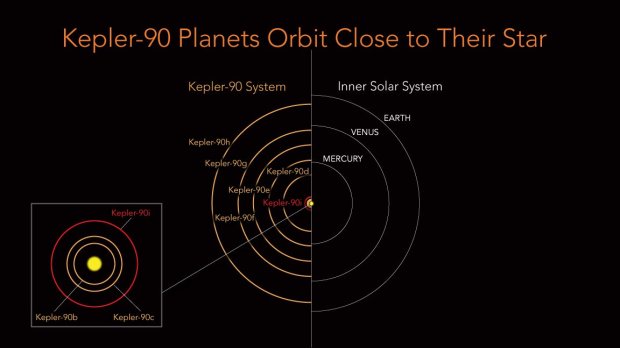
Kepler is a telescope dedicated to searching for planets around other stars. Until it went into space, we had no idea whether alien worlds were orbiting other suns. But it has allowed scientists to reveal that planets are in orbit around stars across the universe. Google used a technique machine learning to analyse pre-existing data from Kepler, which used advanced artificial intelligence to scan through vast amounts of data at high speed. ‘Machine learning really shines in situations where there is so much data that humans can’t search it for themselves,’ said Google software engineer Christopher Shallue. ‘We got lots of false positives of planets but also potentially more real planets,’ Vanderburg said. ‘It’s like sifting through rocks to find jewels. If you have a finer sieve, then you will catch more rocks, but you might catch more jewels as well.’
This figure shows the number of systems with one, two, three, planets, etc. Each dot represents one known planetary system. We know of more than 2,000 one-planet systems, and progressively fewer systems with many planets. The discovery of Kepler-90i, the first known exoplanet system with eight planets, is a hint of more highly populated systems to come..
Source: NASA, Google and metro.co.uk.





















